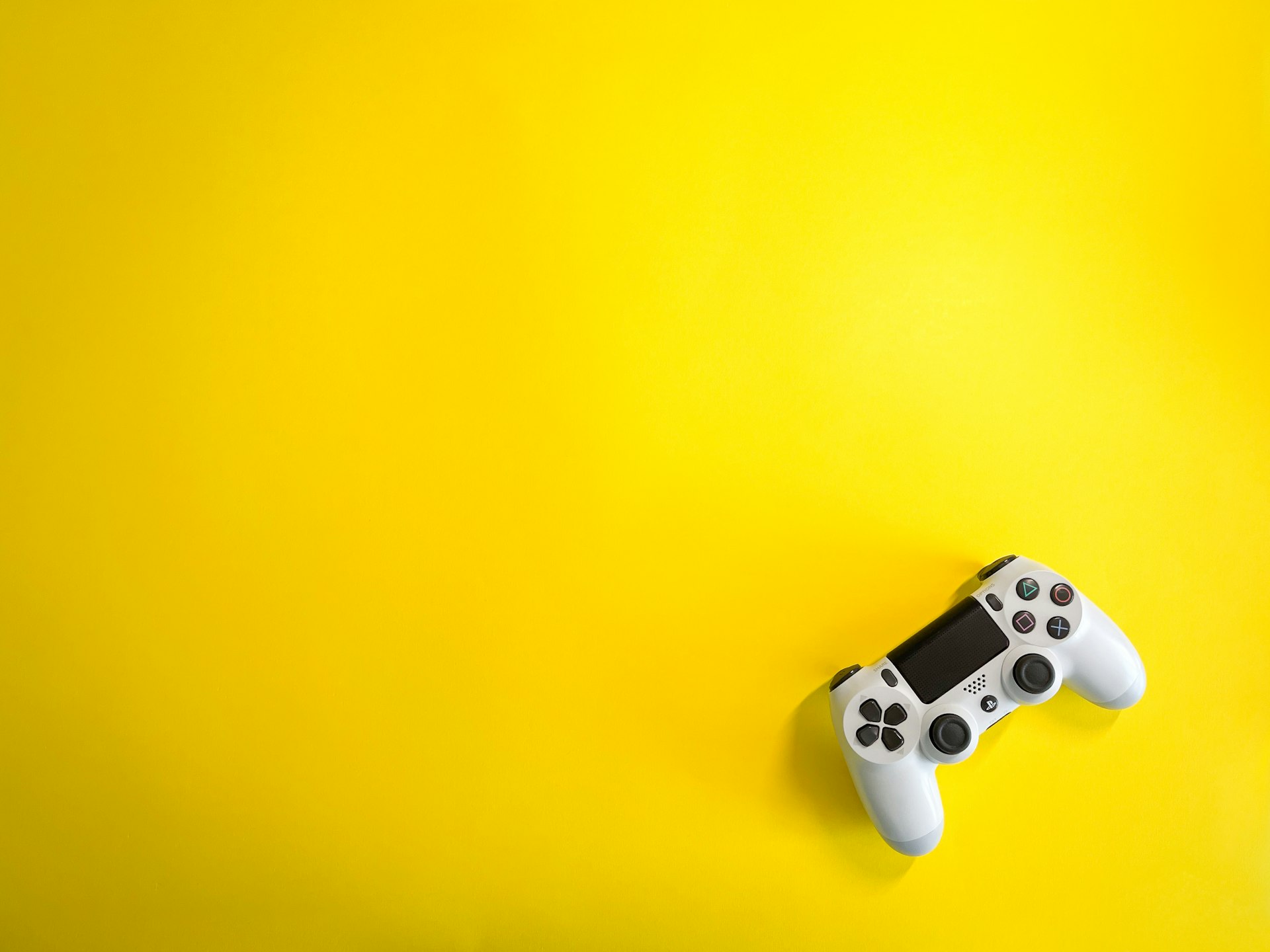Shaping Tomorrow’s Games: The Future of Haptic Feedback in Immersive Gaming

Photo by Hammer & Tusk on Unsplash
Introduction
In recent years, haptic feedback has emerged as one of the most transformative technologies in immersive gaming, giving players a tactile window into virtual worlds. By leveraging advanced sensors and actuators, modern haptic devices deliver nuanced physical sensations-ranging from vibrations to temperature changes-directly to the user, making gameplay more intuitive, realistic, and engaging. This article explores the future of haptic feedback in immersive gaming, analyzes the latest trends and developments, and offers actionable guidance for players and developers seeking to access and implement these innovations.
The Evolution of Haptic Feedback in Gaming
Haptic feedback, once limited to simple vibrations in controllers, has evolved into a sophisticated suite of technologies that simulate touch, force, and even environmental sensations. Early gaming devices, such as the first-generation rumble controllers, offered basic vibrations in response to in-game events. Today, leading consoles like the PlayStation 5 feature advanced haptic engines and adaptive triggers, enabling players to feel a spectrum of textures, forces, and resistance. For example, the DualSense controller allows users to sense the tension of a bowstring or the subtle difference between walking on sand versus gravel, dramatically enhancing immersion [1] .
Many major game developers and hardware manufacturers are now prioritizing the integration of haptic feedback, recognizing its powerful impact on player engagement and satisfaction. Sony, Microsoft, and other industry leaders have reported increased player retention and positive feedback associated with haptic-enabled products [1] . This momentum is driving rapid innovation and setting new standards for tactile interactivity.
Latest Trends and Technological Advancements (2025)
Several key trends are shaping the future of haptic feedback in immersive gaming:
Advanced Actuator Technologies: The industry is transitioning from basic linear resonant actuators (LRAs) to more sophisticated systems such as voice coil motors (VCMs) and piezoelectric actuators. These components allow for more precise, localized, and multi-dimensional haptic effects, including spatial rendering and complex surface simulations [2] .
Multi-Dimensional Feedback: Modern haptic devices now deliver not just vibration, but also kinesthetic (force) feedback, textural simulations, and even thermal cues. This enables players to feel not only impacts and collisions, but also the roughness or stickiness of virtual surfaces, and temperature changes-from the chill of an ice cave to the warmth of a sunlit meadow [2] .
Wearable Haptic Devices: Full-body haptic suits, gloves, and motion controllers are becoming accessible to consumers, allowing users to experience physical touch, pressure, and movement throughout their entire body. These wearables are increasingly used in both VR and AR environments, providing a level of realism that was previously unattainable [3] .
Multisensory Integration: The next generation of haptic technology is focused on delivering multiple types of touch stimuli simultaneously, such as vibration, skin stretch, and temperature. This multisensory approach bridges the gap between digital interaction and human touch, but also introduces new engineering and perceptual challenges [4] .
Real-World Applications and Case Studies
Recent deployments of advanced haptic feedback in gaming have demonstrated substantial improvements in player immersion and satisfaction. For instance, racing games equipped with adaptive triggers and wideband haptic effects allow players to sense different terrains and vehicle dynamics in real time. Combat-oriented titles use impact haptics to simulate the force and direction of blows, while adventure games utilize ambient haptics to mimic wind, rain, or environmental pressure.
Haptic suits and gloves have enabled VR gamers to experience authentic sensations such as the weight of virtual objects, the texture of materials, and even temperature changes. These innovations are not limited to entertainment: multisensory haptic devices are now being used in rehabilitation, training, and remote collaboration, highlighting their versatility and expanding commercial potential [4] .

Photo by Yazid N on Unsplash
Implementation Guidance: How to Access Next-Generation Haptic Gaming
For gamers and developers interested in leveraging advanced haptic feedback, several actionable pathways exist:
For Players:
- Research and purchase compatible devices: Major console manufacturers such as Sony and Microsoft offer controllers with advanced haptic features. For VR, consider devices like haptic gloves and suits from established brands. To confirm product compatibility, always visit the official manufacturer’s website or consult product manuals.
- Explore games with haptic support: Many new releases, especially for PlayStation 5 and high-end PC VR platforms, are designed to maximize haptic feedback. Look for official game listings that specify haptic feature integration.
For Developers:
- Integrate haptic SDKs: Leading haptic device vendors provide software development kits (SDKs) to enable real-time haptic effect design, mixing, and localization. For a comprehensive overview of SDK capabilities and implementation steps, search for ‘haptic gaming SDK’ and review documentation from major device manufacturers [2] .
- Test and optimize: Utilize in-app and in-engine haptic testing tools to refine tactile effects before release. Many SDKs offer remote synchronization and over-the-air updates for efficient iteration.
When seeking devices, always verify the legitimacy of vendors through official channels or retailer listings. For software and SDKs, confirm compatibility with your chosen game engine and hardware platform.
Challenges and Solutions
Despite its promise, haptic technology faces several challenges as it scales:
Engineering Complexity: Designing multisensory haptic devices requires sophisticated actuator arrays and control algorithms. Solutions include collaborating with hardware specialists and leveraging open-source haptic frameworks for rapid prototyping [4] .
Cost and Accessibility: Full-body haptic suits and advanced controllers remain expensive for many consumers. To address this, some companies offer modular or scaled-down versions, and there is growing interest in community-driven open-source hardware projects.
Standardization: The lack of unified protocols for haptic feedback across devices and platforms can create compatibility issues. Developers can mitigate this by adhering to established SDKs and industry standards, and by prioritizing cross-platform support.
Alternative Approaches and Future Outlook
While high-end haptic systems offer unparalleled immersion, more accessible options exist for players and developers:
– Mobile and Handheld Devices: Miniaturized force feedback systems are increasingly available in smartphones and handheld gaming devices, bringing tactile effects to a wider audience.
– Surface Haptics: Some gaming interfaces use microfluidics or actuator arrays to simulate dynamic tactile sensations on touchscreens, making haptics available even in compact form factors [5] .
As research continues, expect new breakthroughs in actuator miniaturization, energy efficiency, and multisensory feedback. Haptic technology may soon extend beyond gaming into fields like telemedicine, remote collaboration, and education, further expanding its reach and impact.
Key Takeaways
Haptic feedback is rapidly redefining immersive gaming, offering players and developers unprecedented opportunities for realistic interaction and engagement. Whether through advanced controllers, full-body suits, or multisensory wearables, the future promises richer, more lifelike gaming experiences. To access these innovations, consult official manufacturer resources, review game and hardware compatibility, and consider joining community forums for the latest developments. For developers, integrating robust haptic SDKs and adhering to industry standards are essential steps for successful implementation.
References
- [1] Negative Five Ventures (2025). Haptic Technology in Gaming – In-depth analysis of haptic feedback in modern gaming controllers.
- [2] Haptics Industry Forum (2025). Haptics Gaming SDK Survey – Comprehensive overview of SDKs and actuator trends.
- [3] Knick Global (2025). How Realistic Will AR/VR Gaming Be in 2025? – Review of haptic suits, gloves, and immersive VR applications.
- [4] Rice University (2025). Revolutionizing Touch: Researchers Explore the Future of Wearable Multisensory Haptic Technology – Nature Reviews Bioengineering.
- [5] Flatirons (2025). What is Haptic Feedback? – Ultimate Guide to surface haptics and tactile interfaces.



